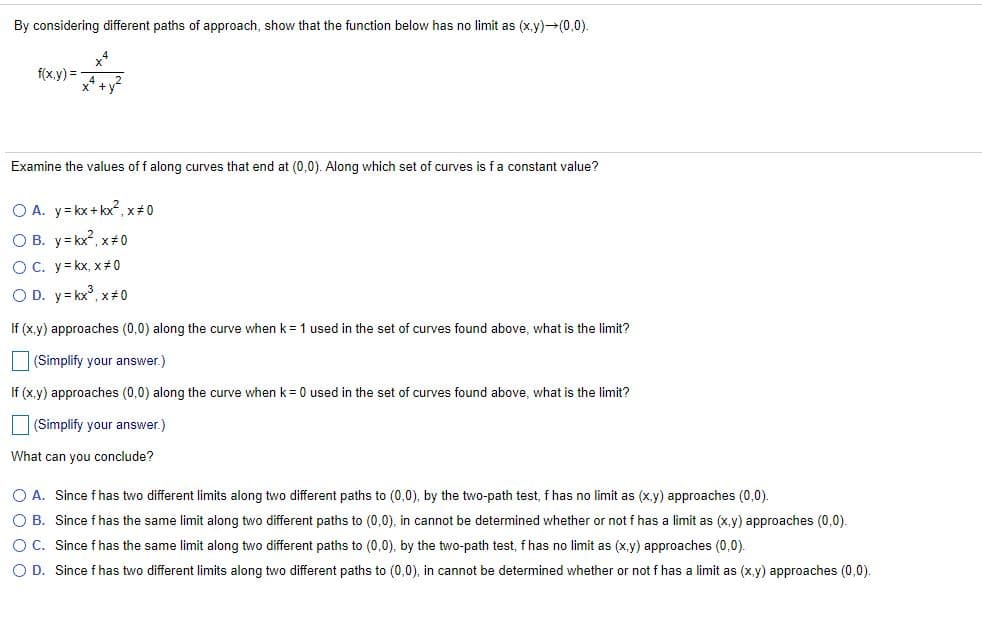College Algebra (MindTap Course List)
12th Edition
ISBN:9781305652231
Author:R. David Gustafson, Jeff Hughes
Publisher:R. David Gustafson, Jeff Hughes
Chapter3: Functions
Section3.3: More On Functions; Piecewise-defined Functions
Problem 99E: Determine if the statemment is true or false. If the statement is false, then correct it and make it...
Related questions
Question

Transcribed Image Text:By considering different paths of approach, show that the function below has no limit as (x,y)→(0,0).
f(x.y) =
Examine the values of f along curves that end at (0,0). Along which set of curves is fa constant value?
O A. y= kx+ kx?, x 0
O B. y= kx, x# 0
O C. y= kx, x#0
O D. y= kx, x+0
If (x.y) approaches (0,0) along the curve when k = 1 used in the set of curves found above, what is the limit?
(Simplify your answer.)
If (x.y) approaches (0,0) along the curve when k = 0 used in the set of curves found above, what is the limit?
(Simplify your answer.)
What can you conclude?
O A. Since f has two different limits along two different paths to (0,0), by the two-path test, f has no limit as (x.y) approaches (0,0).
O B. Since fhas the same limit along two different paths to (0,0), in cannot be determined whether or not f has a limit as (x,y) approaches (0,0).
O C. Since fhas the same limit along two different paths to (0,0), by the two-path test, f has no limit as (x,y) approaches (0,0).
O D. Since fhas two different limits along two different paths to (0,0), in cannot be determined whether or not f has a limit as (x,y) approaches (0,0).
Expert Solution
This question has been solved!
Explore an expertly crafted, step-by-step solution for a thorough understanding of key concepts.
Step by step
Solved in 2 steps

Knowledge Booster
Learn more about
Need a deep-dive on the concept behind this application? Look no further. Learn more about this topic, calculus and related others by exploring similar questions and additional content below.Recommended textbooks for you

College Algebra (MindTap Course List)
Algebra
ISBN:
9781305652231
Author:
R. David Gustafson, Jeff Hughes
Publisher:
Cengage Learning


College Algebra (MindTap Course List)
Algebra
ISBN:
9781305652231
Author:
R. David Gustafson, Jeff Hughes
Publisher:
Cengage Learning
